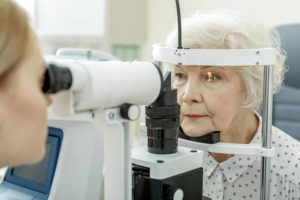
Glaucoma is a serious eye condition that affects millions of people worldwide. Known as the “silent thief of sight,” glaucoma is a leading cause of blindness. Despite its prevalence, there are numerous misconceptions surrounding this disease. These myths can lead to misunderstandings about glaucoma’s causes, symptoms, and treatment options. Dispelling myths about glaucoma is crucial for promoting awareness, early detection, and effective management of this sight-threatening condition.
One of the most prevalent myths about glaucoma is that it only occurs in older adults. While it’s true that age is a significant risk factor for the development of glaucoma, the condition can affect people of all ages, including infants and young adults. Certain factors like family history, ethnicity, and underlying medical conditions can increase the risk of glaucoma at any age. Therefore, regular eye exams are essential for everyone, regardless of age, to detect glaucoma early and prevent vision loss.
While peripheral vision loss is a hallmark symptom of glaucoma, it’s not the only consequence of the disease. Glaucoma can also lead to other complications such as headaches, eye pain, and even blindness if left untreated. However, many people mistakenly believe that glaucoma only affects vision and overlook other warning signs. It’s important to educate patients about the diverse symptoms of glaucoma to ensure timely diagnosis and appropriate intervention.
There is a common misconception that performing certain eye exercises or using alternative therapies can cure glaucoma. However, there is no scientific evidence to support this claim. Glaucoma is a chronic condition caused by increased pressure within the eye, leading to damage to the optic nerve. While lifestyle changes and alternative therapies may complement conventional treatment methods, they cannot replace them. Patients should rely on proven medical interventions prescribed by their ophthalmologist to manage glaucoma effectively.
While there are ways to reduce the risk of developing glaucoma, such as maintaining a healthy lifestyle and attending regular eye exams, it’s not entirely preventable. Certain risk factors, like age and family history, are beyond our control. Additionally, some forms of glaucoma may develop without any noticeable symptoms, making early detection challenging. However, by raising awareness about the importance of routine eye exams and risk factors associated with glaucoma, we can improve early detection rates and minimize the impact of the disease on vision.
Another common myth is that normal eye pressure means you’re not at risk for glaucoma. While high intraocular pressure (IOP) is a significant risk factor for glaucoma, it’s not the sole indicator of the disease. Some individuals can develop glaucoma with normal or low eye pressure, a condition known as normal-tension glaucoma. Further, some with high IOP may not develop the disease. Comprehensive screening and testing, including optic nerve assessments and visual field testing, are essential for accurate glaucoma diagnosis and management.
With early detection and proper treatment, most people with glaucoma can maintain good vision for their lifetime. Glaucoma treatment options focus on lowering eye pressure and protecting the optic nerve. Regular eye checkups and adherence to medication are key.
Knowledge is key in the fight against glaucoma. If you live in the Washington DC area and would like to learn more, schedule a consultation with the glaucoma specialists at Washington Eye Physicians & Surgeons.
© 2025 Washington Eye Physicians & Surgeons
The material contained on this site is for informational purposes only and is not intended to be a substitute for professional medical advice, diagnosis, or treatment. Always seek the advice of your physician or other qualified health care provider.